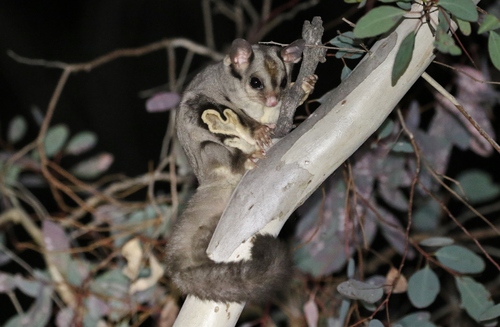
Sugar Glider
The sugar glider, Petaurus breviceps, is a nocturnal marsupial known for its remarkable ability to glide between trees using a unique membrane. Found in Australia and New Guinea, these social creatures thrive on a diet of nectar and insects, playing a vital role in pollination and insect control.
120 months
Lifespan
100.0 - 250.0 g
Weight
Length: 15 - 22 cm
Size
Grey, Black, White
Color
1 year
Age of Sexual Maturity
3 months
Age of Weaning
Least Concern
Conservation Status
Stable
Population Trend
Characteristics
Petaurus breviceps, commonly known as the sugar glider, is a small, nocturnal marsupial native to Australia and New Guinea. It possesses a gliding membrane, allowing it to glide between trees. Sugar gliders are social creatures, living in groups and communicating with a series of chirps and barks. They primarily feed on nectar, fruit, and insects.
Distribution Range of the Sugar Glider
Petaurus breviceps, commonly known as the sugar glider, is native to the eastern and northern parts of Australia, including Queensland, New South Wales, Victoria, and South Australia. They are also found in parts of New Guinea and some surrounding islands.
Sugar Glider's Habitat
Environmental Conditions
The sugar glider inhabits a variety of forested environments, such as tropical and temperate rainforests, eucalyptus forests, and savanna woodlands. These areas typically have a warm climate with moderate to high humidity, and the presence of tall trees that provide both food sources and nesting opportunities.
Ecological Niche
Sugar gliders are arboreal and nocturnal marsupials that occupy the canopy layer of forests. Their ecological niche involves gliding between trees to forage for food, which primarily consists of tree sap, nectar, insects, and small vertebrates. This behavior allows them to efficiently exploit food resources scattered across large areas while avoiding ground predators.
Copyright @ Nature Style Limited. All Rights Reserved.
 English
English